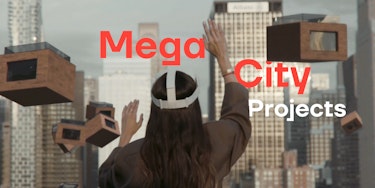The world is witnessing a dramatic rise in mega city projects — large-scale urban developments designed to redefine how we live, work, and interact with our environments. From futuristic metropolises rising in the Middle East to smart cities integrating AI-driven infrastructure, these projects are transforming urban landscapes at an unprecedented scale.
At the core of these developments are three critical factors: innovation, sustainability, and architectural vision. Architects, designers, and urban planners are pushing the boundaries of what’s possible, crafting environments that cater to the demands of future populations. Moreover, these projects attract immense global attention from investors and developers due to their economic potential, technological advancements, and unparalleled urban experiences.
"Mega city projects are not just about scale; they are about reimagining the future of urban living with sustainability and innovation at the forefront." — Dr. Yasir Al-Sharif, Urban Design Specialist
In this blog, we’ll explore some of the most ambitious mega city projects, the technology and sustainability strategies behind them, and how visual storytelling plays a key role in attracting investors and buyers.
NEOM, Saudi Arabia
A $500 billion smart city project, NEOM is envisioned as a futuristic metropolis built on sustainable technology and AI-driven urban planning. The centerpiece, The Line, is an ultra-modern linear city stretching 170 km without roads or cars, designed to accommodate 9 million residents while maintaining a zero-carbon footprint. The city will incorporate floating industrial hubs, AI-powered transportation, and renewable energy sources, making it one of the most ambitious developments of the 21st century.

Credit: Dezeen
Forest City, Malaysia
A smart eco-city integrating green spaces, AI-driven infrastructure, and sustainable building solutions to redefine urban living. Designed as a self-sustaining ecosystem, Forest City blends vertical greenery, smart homes, and autonomous transportation, fostering a livable, eco-friendly environment while attracting foreign investment.

Credit: DOMUS
Masdar City, UAE
One of the world's first planned sustainable cities, Masdar is designed as a hub for renewable energy and green technology. The city relies on solar farms, wind energy, and passive cooling techniques, reducing its carbon footprint while serving as a model for future urban sustainability. Its pedestrian-friendly design and autonomous transport network make it a leading example of a sustainable smart city.
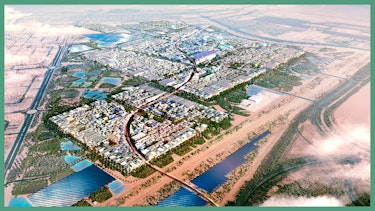
Credit: The Times
Songdo International Business District, South Korea
A connected smart city designed with data-driven infrastructure, integrated IoT systems, and sustainable transportation solutions. Over 40% of the city is dedicated to green space, with intelligent water management and waste disposal automation ensuring efficiency. Every building in Songdo is equipped with smart sensors, allowing for real-time monitoring of energy consumption and environmental impact.
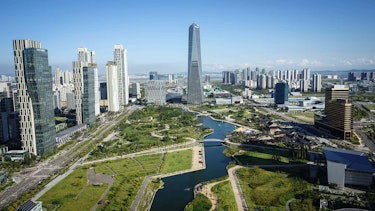
Credit: We Build Value
Amaravati, India
Planned as the new capital of Andhra Pradesh, Amaravati is a visionary smart city that integrates sustainability, smart infrastructure, and renewable energy solutions. Inspired by the grid-based planning of cities like Singapore, Amaravati will feature solar-powered government buildings, efficient water recycling systems, and AI-driven traffic management to create an environmentally responsible urban center.
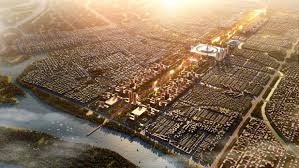
Credit: CNN
Eko Atlantic, Nigeria
Built on reclaimed land off the coast of Lagos, Eko Atlantic is designed to be West Africa’s new financial hub. The city features skyscrapers with sustainable design, energy-efficient public transport, and a robust flood protection system to combat rising sea levels. Eko Atlantic is a prime example of how mega city projects can adapt to climate challenges while fostering economic growth.
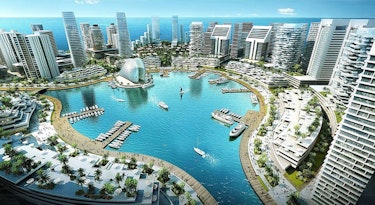
Credit: CNN
The rapid expansion of mega city projects is shaping the future of urbanization, offering sustainable, tech-driven environments for the next generations. As competition for investment intensifies, real estate marketing teams and developers must embrace high-quality visual content to differentiate their projects and captivate stakeholders.
